Conservation cutbacks put Brazil's Amazon animals at risk
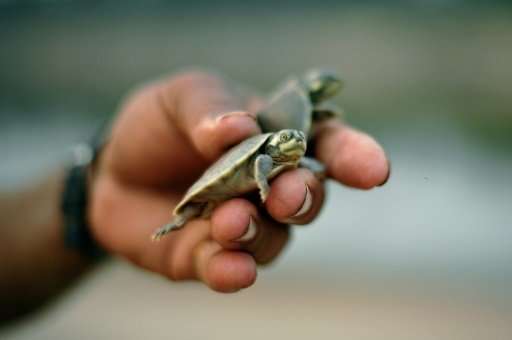
Benedito de Souza scoops back sand hiding a nest of baby giant Amazon River turtles that he had covered over weeks ago to hide from predators. Suddenly exposed, dozens of the tiny reptiles make a run for it.
During the dry season in Brazil's Amazon, the Purus River snaking through the Medio Purus Extractive Reserve shrinks to leave vast beaches on which thousands of turtles lay their eggs every year. The marks from their nocturnal activity can be seen in the sand by day from passing boats.
"They're like my children," de Souza said with emotion, using an improvised bag to grab the reptiles, the first of the season's hatchlings.
A local community leader who did his first environmental course in 2007, he watches over the Purus River beaches with his neighbors during the June-to-November season to protect the eggs.
The great Amazon River turtle, also known as the Arrau turtle, can grow to a meter (40 inches) in length.
Although not classified as endangered, "in fact, they are," said Roberto Lacava, head of the chelonian program for Brazil's governmental IBAMA environmental agency. His unit was created because populations of several species in the region were deemed to be imperiled.
Protectors turned poachers
With only 20 officers to cover eight vast Brazilian states, the program relies on volunteers to carry out its work in the Amazonas state, a territory bigger than the whole of Peru.
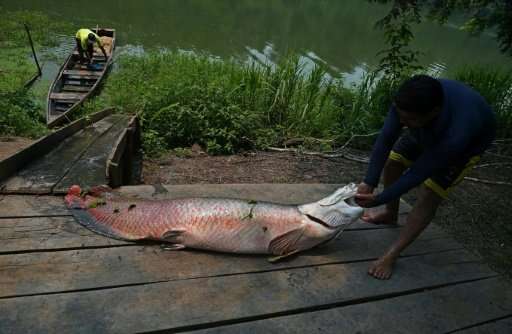
But as IBAMA funding has been cut back, some of those volunteers turned to the dark side, using their knowledge to become poachers instead of protectors.
"Many hoped to be paid, and when they weren't, they became predators," Souza said, placing baby turtles in a tank for transportation to a lake where their odds for survival would be better.
Lacava said that IBAMA is forced to make do at a time when "resources for conservation are lacking."
This year, the federal government has announced a 43 percent reduction in the environment ministry's budget on which IBAMA depends. And that comes against the backdrop of what critics say is President Michel Temer's steady erosion of environmental protections.
"That is a big worry," Lacava said. "There's been a drastic cut-back. We have to send fewer officers into the field, and this could have a big impact on the results that we're getting."
'No resources'
Ze Bajaga, the technical coordinator for Brazil's National Indian Foundation (FUNAI) in the town of Labrea, described an equally grim situation.
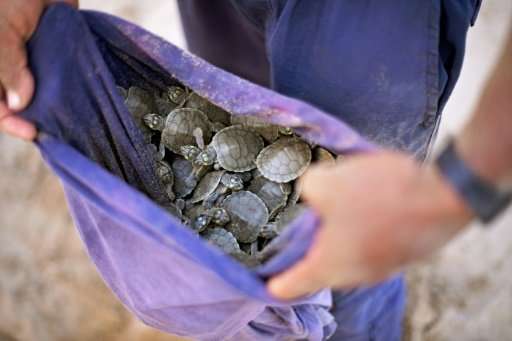
"We have no resources, no people," he said.
He has just returned from the first field environmental monitoring operation in the area since 2015. "The ideal would be to do this three times per year, but the lack of resources means we only do it once every two years," he explained.
He said that, a month ago, he observed that turtle and fish populations in the river had not increased in several locations because of illegal fishing.
"Poaching grows where there is an absence of the government," said Ana Claudia Torres, with the fishing management program for the Mamiraua Institute, based in the Amazon town of Tefe.
The program was started in 1997 and is used to put checks on catches of arapaima fish present in five Brazilian states.
Weighing up to 220 kilograms (485 pounds), arapaima is one of the world's biggest freshwater fish. It has been on the endangered list since 1975.
However, Torres said, "if we consider their number in terms of stock, in Amazonas state we could say their population has recovered and they are no longer vulnerable."
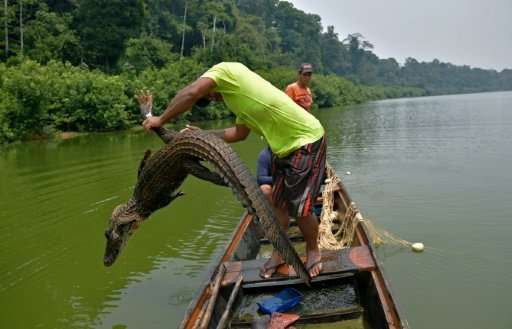
Local investment
In the Medio Purus Extractive Reserve, there are 200 lakes containing arapaima, 16 of which have managed fishing programs, Jose Maria de Oliveira, manager for the Chico Mendes Institute for Biodiversity Conservation in Medio Purus, said.
In one of them, Sacada Lake, Ednildo de Souza—son of Benedito de Souza—and a friend were fishing, careful to make sure they observed the rule on only catching arapaima over 1.5 meters in length and between September and November.
"It got better when it became legalized," Ednildo said as he brought in a catch.
"It's small," he noted, letting the fish go. He boasted that his best-ever catch weighed 153 kilograms, though the average one is around 100 kilograms.
De Oliveira said that structuring and allowing limited sales of the fish had helped combat poaching, underlining that vigilance alone is not enough. Investment in community projects is also required.
Nevertheless, Ze Bajaga said poaching is growing and "without vigilance, the managed program will weaken."
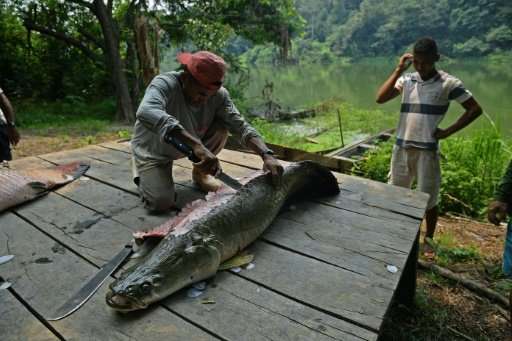
There's a similar threat for the Arrau turtles, Lacava said.
"Just one year without any watching over them could be enough so that the species is wiped out locally," he said.
Beyond the poaching, climatic factors and the construction of hydroelectric dams in the Amazon are threatening fauna and the forests themselves.
"The situation is really dangerous," Ze Bajaga said. "We are on the brink of an ecological disaster."
© 2017 AFP


















